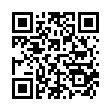|
This article is cited in 2 scientific papers (total in 2 papers)
The Racah Algebra as a Subalgebra of the Bannai–Ito Algebra
Hau-Wen Huang
Department of Mathematics, National Central University, Chung-Li 32001, Taiwan
Abstract:
Assume that ${\mathbb F}$ is a field with $\operatorname{char}{\mathbb F}\not=2$. The Racah algebra $\Re$ is a unital associative ${\mathbb F}$-algebra defined by generators and relations. The generators are $A$, $B$, $C$, $D$ and the relations assert that $[A,B]=[B,C]=[C,A]=2D$ and each of $[A,D]+AC-BA$, $[B,D]+BA-CB$, $[C,D]+CB-AC$ is central in $\Re$. The Bannai–Ito algebra $\mathfrak{BI}$ is a unital associative ${\mathbb F}$-algebra generated by $X$, $Y$, $Z$ and the relations assert that each of $\{X,Y\}-Z$, $\{Y,Z\}-X$, $\{Z,X\}-Y$ is central in $\mathfrak{BI}$. It was discovered that there exists an ${\mathbb F}$-algebra homomorphism $\zeta\colon \Re\to \mathfrak{BI}$ that sends $A \mapsto \frac{(2X-3)(2X+1)}{16}$, $B \mapsto \frac{(2Y-3)(2Y+1)}{16}$, $C \mapsto \frac{(2Z-3)(2Z+1)}{16}$. We show that $\zeta$ is injective and therefore $\Re$ can be considered as an ${\mathbb F}$-subalgebra of $\mathfrak{BI}$. Moreover we show that any Casimir element of $\Re$ can be uniquely expressed as a polynomial in $\{X,Y\}-Z$, $\{Y,Z\}-X$, $\{Z,X\}-Y$ and $X+Y+Z$ with coefficients in ${\mathbb F}$.
Keywords:
Bannai–Ito algebra, Racah algebra, Casimir elements.
Received: May 22, 2020; in final form July 31, 2020; Published online August 10, 2020
Citation:
Hau-Wen Huang, “The Racah Algebra as a Subalgebra of the Bannai–Ito Algebra”, SIGMA, 16 (2020), 075, 15 pp.
Linking options:
https://www.mathnet.ru/eng/sigma1612 https://www.mathnet.ru/eng/sigma/v16/p75
|

| Statistics & downloads: |
| Abstract page: | 84 | | Full-text PDF : | 23 | | References: | 15 |
|




 Contact us:
Contact us: Terms of Use
Terms of Use
 Registration to the website
Registration to the website Logotypes
Logotypes








 Citation in format
Citation in format 
